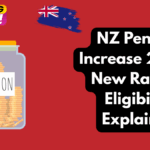In July 2025, New Zealand introduced new reforms to sick leave entitlements, aiming to balance fairness for employees and clarity for employers. These updates affect when workers become eligible, how leave is verified, and the way sick days can be stored long-term. If you work in New Zealand or manage staff, understanding the NZ sick leave rules 2025 is now critical.
The shift reflects growing attention to employee rights in New Zealand, especially after years of increased focus on health, wellbeing, and workplace flexibility. The latest framework sets clearer expectations and modernizes how sick leave fits into the wider employment landscape.

What Has Changed in the 2025 Sick Leave Policy?
The new rules aren’t a full overhaul, but several adjustments reshape how sick leave works in practice. Below is a summary comparing key areas before and after the 2025 changes:
| Category | Before July 2025 | After July 2025 |
|---|---|---|
| Eligibility Period | 6 months of continuous employment | Now reduced to 3 months |
| Annual Entitlement | 10 paid sick leave days | Still 10, with added flexibility |
| Maximum Accrual Cap | 20 days | Increased to 30 days |
| Carry-Over of Unused Leave | Required manual request | Now automatic rollover |
| Proof of Sickness | Required after 3 days off | Can be requested after just 1 day, if justified |
These adjustments build on the original 2021 reforms, but the emphasis now is on ease of use, flexibility, and consistency across different industries and job types.
Earlier Eligibility Means Faster Protection
One of the most worker-friendly parts of the NZ sick leave rules 2025 is the shortened qualification period. Instead of waiting six months to be eligible, employees now qualify after only three months of continuous employment. This change especially benefits workers on short-term or seasonal contracts and provides support much earlier in their employment journey.
Additionally, this change aims to ensure that every employee—whether full-time or part-time—gets timely access to basic health protections without unnecessary delays.
Increased Accrual for Long-Term Security
While the basic entitlement of 10 sick days per year remains unchanged, the ability to bank more unused days has been expanded. Employees can now accumulate up to 30 days of paid sick leave, up from the previous 20-day cap.
This adjustment encourages staff to save their leave for when it’s genuinely needed—such as for prolonged illness or family emergencies—without being pressured to use it unnecessarily just to avoid losing it.
Verification Requirements Are Tighter
Another key update is around medical verification. Under the new rules, employers are allowed to request a medical certificate after just one day of sick leave. However, this must be based on reasonable grounds and cannot be used to intimidate or discourage valid use of sick leave.
This change aims to strike a balance: discouraging false claims while respecting genuine illness and protecting employee rights in New Zealand.
What Employers Need to Do Now
Businesses should immediately review their employment agreements, HR policies, and internal leave systems to reflect the July 2025 updates. Any contracts written before these changes came into effect may need amendments to stay compliant.
Clear communication is also essential. Employers should inform staff of the changes through internal memos, meetings, or updates to employee handbooks. Failure to comply with the updated NZ sick leave rules 2025 could result in legal risks or loss of employee trust.
Why These Updates Matter in 2025
Sick leave isn’t just about illness—it’s a core part of job security and employee wellbeing. These 2025 updates are designed to give workers more control, while also helping employers manage sick leave more efficiently. By building a system that supports health without unnecessary red tape, New Zealand continues to set a strong global example.
FAQs About NZ Sick Leave Rules 2025
How many sick days can I save under the 2025 rules?
You can now save up to 30 days of paid sick leave if you don’t use your annual entitlement.
When do I become eligible for paid sick leave?
Under the updated policy, you’re eligible after just three months of continuous employment.
Do I still need a doctor’s note for short absences?
Yes, your employer can request a medical certificate even after a single day, provided the request is reasonable.
Are part-time employees included in these changes?
Yes. Part-time workers are covered under the same rules, with leave calculated proportionally.
What happens to my unused sick leave?
It automatically rolls over at the end of the year until it reaches the new 30-day limit.
Click here to learn more



